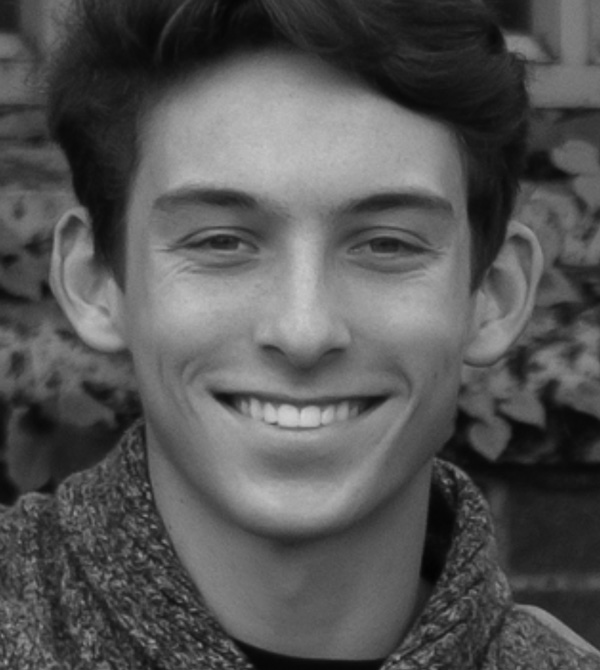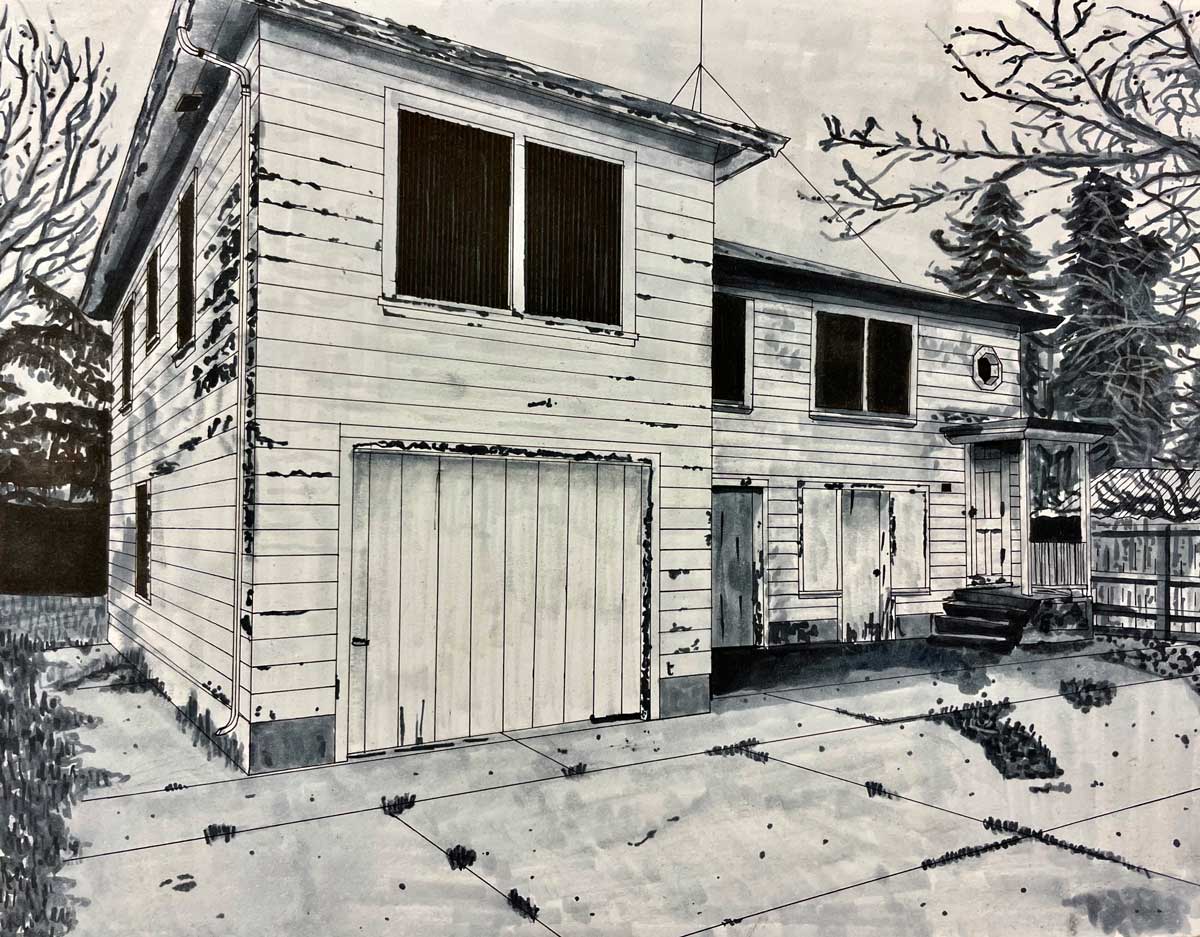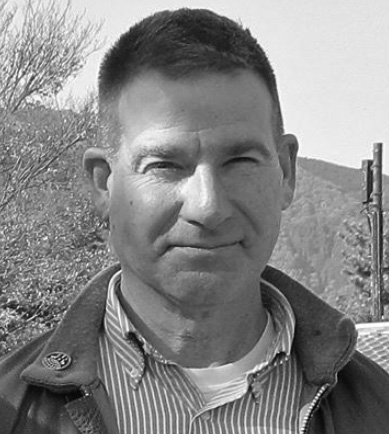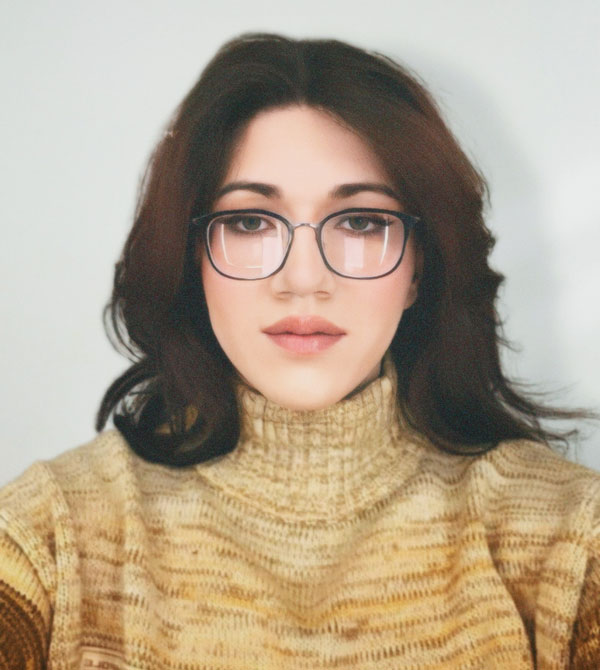

Matthew Nielsen

AP DRAWING
Healdsburg High School|Healdsburg, CA

Dimensions: 8.5” x 11”|Material(s): Pen, Pencil, Copic marker, Ruler, sharpie|Process(es): architecture exploration, working from original Photo with adjustments with perspective and value|Curatorial Note: Architecture is explored through this series of abandoned homes. There is a feeling of isolation and loneliness one feels when viewing the artworks. Perspective, line, and texture are depicted in the mood-inspired community. One can wonder, who lived in these homes? Where are they now?
Student statement
Student statement
When I started this project, finding an idea was the most challenging thing to do. This project was a substantial test of my artistic abilities, challenging me in numerous ways and providing a test of experimentation. As I started this creative effort, I often confronted many decisions that stretched the boundaries of my artistic skill set. From one piece to the next, I constantly wrestled with choices, from selecting materials to deciding whether to show my art in color or the simplicity of black and white.
At the start of this project, I was confronted with a blank canvas, figuratively and literally. I needed a clear directive to realize my artistic direction. At this point, I went to my art teacher, Mr. Lancaster, who offered a key piece of advice that would redirect the course of my creative exploration. His short yet profound suggestion was to immerse myself in the city's streets and seek inspiration from the world surrounding me. As I wandered the town, my perception began to change, and it was during these excursions that I discovered my newfound muse: old, dilapidated, and abandoned buildings. These structures, once symbols of wreckage and decay, have now become the central focus of my project.
This is why I want to stress the importance of going outside and exploring your environment to ignite your creative spark. The world around us is full of inspiration, waiting to be discovered. Each street you walk down, every park you visit, and every corner you turn offers an enormous amount of visual, sensory, and emotional stimuli. Furthermore, by exploring your surroundings, you're not limited to a particular style or subject matter. Your environment is a vibrant and ever-evolving source of diverse stimuli. Whether you're drawn to the gritty looks of urban decay, the peace of natural landscapes, or the vibrant chaos of a city, your surroundings can house a broad range of artistic ideas.
Finally, my advice for other AP art students is to embrace experimentation. It would be best to remember that you can change your artistic direction at anytime. Keep pushing forward by exploring different approaches and summoning your courage to try new things. Instead of falling victim to discouragement when facing creative challenges or setbacks, I sincerely hope you will adopt a problem-solving mindset that will push you through this project and into the future.

As I explore various environments and look at different angles from which to photograph them, I have learned to allow them to tell their story. As I work from the original photo images, I adjust the perspective and the surface treatment to bring forward and embellish their mood. The materials I have chosen, such as ink and charcoal, create surface treatments that aid storytelling.
Teacher statement
Teacher statement

Linus Lancaster
Unique features of the visual arts program at Healdsburg High School include a strong emphasis on integrated, transdisciplinary practices that incorporate ecology, electronics, STEAM, etc., into our projects. We have a strong CTE department and a forward-thinking continuation academy with whom we collaborate regularly. My M.A. and Ph.D. were done in direct collaboration with my students, and we are increasingly focused on getting out into the community and working with local artists, community groups, and the city on public infrastructure projects.
As a small school of 500 students, we do not have stand-alone advanced classes. All art courses are mixed grades of 9-12 from beginning courses through AP Art and Design. They are all taught as I would a college Art 101 class, introducing the elements and principles of design through exercises that culminate in a finished project. The subject matter is always the student's choice, and we usually avoid thematic projects. Advanced students see a lot of repetition of the basics while beginning students have advanced peers from whom to draw inspiration. There are always side projects, usually sculptural and often performative. Beginning and advanced students can diverge from conventional classwork and participate in larger projects anytime.
Matthew's interest in environmental science and his exploration of temporalities, transition, and decay in residential spaces in the Anthropocene are excellent representations of our program. We are very proud of his accomplishments and the dedication shown by all of our AP Art and Design artists.
Matthew Nielsen





